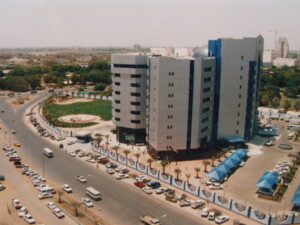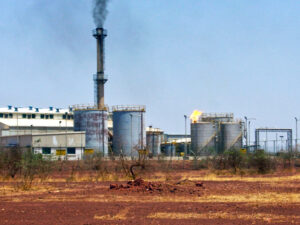Sudanese Pound under pressure amid forex scarcity
The Sudanese Pound (SDG) has fallen sharply against major international currencies over the last two days. Traders active on Khartoum’s parallel market ascribe the flux to a scarcity of foreign currency – an ongoing issue in Sudan’s ailing economy, that is driving an increasing number of Sudanese into poverty and hunger.
 Sudanese Pounts (Photo: RD)
Sudanese Pounts (Photo: RD)
The Sudanese Pound (SDG) has fallen sharply against major international currencies over the last two days. Traders active on Khartoum’s parallel market ascribe the flux to a scarcity of foreign currency – an ongoing issue in Sudan’s ailing economy, that is driving an increasing number of Sudanese into poverty and hunger.
On Sunday, parallel market traders were buying the US Dollar for SDG 478, while the greenback was selling at SDG 574 on the streets of Khartoum. The Central Bank of Sudan currently quotes the middle US Dollar rate at SDG447.07
Political and economic instability resulting in hyperinflation in Sudan are forcing more Sudanese into poverty, and inability to afford the basic necessities of life. The latest estimates show that currently one-third of the population, or 15 million people, face food insecurity throughout the lean season in Sudan, which lasts through September.
The latest UN World Food Programme (WFP) Market Monitor for Sudan in July, shows that the cost of a WFP local food basket in Sudan increased in June by 8.4 per cent over the previous month, which at SDG457.80, represents a 57.8 per cent increase since January, according to the WFP. By comparison, in June 2021, a local food basket cost SDG198.00.
During a press conference at the premises of the Sudan News Agency (SUNA) last week, Abdelrahman Abbas, Secretary-General of the Steering Committee of the Federation of Sudanese Chambers of Industry said Sudan’s key industrialists have been discussing several issues, including the ‘‘catastrophic decision’’ taken by the Ministry of Finance to raise the official Dollar exchange rate from SDG445 to SDG564. With service fees included, this will lead to a 35 per cent rise in production costs, Abbas claimed.
The general rise in the cost of production will be felt most by those buying the products, Abbas stated, adding that more than 80 per cent of the Sudanese factories operate at capacities less than 20 per cent.
Poverty
Like other countries that are subject to military regimes and suffer from low rates of transparency, there is a large gap between the officially announced figures on poverty indicators and the actual reality in Sudan.
While UN reports indicated in April that 46.5 per cent of the country’s population lives below the poverty line, some organisations and outlets, including Noon Post, question the validity of these statistics as UN statistics are derived from official national data issued by the Sudanese government.
Before the October 25 military coup, during the civilian-led government headed by PM Abdallah Hamdok, for example, the Sudanese Social Security Commission in 2020 announced that 77 per cent of all Sudanese lived below the poverty line, pointing out that their per capita income did not exceed $1.25 per day.
Hyperinflation
In 2019, banks across the country limited cash withdrawals, which intensified in the run-up to the overthrow in the Al Bashir regime in April 2019. This resulted in long queues of customers trying to withdraw a little cash from the banks. Public trust in the banking system dwindled, so traders and the public took to keeping their money at home, rather than deposit it into banks.
The socioeconomic detritus of the 30-year dictatorship of Al Bashir, who has also been on trial in Khartoum for currency offences, has left Sudan’s economy in ruins, with the value of the Sudanese Pound (SDG) at all-time lows against international currencies.
In its death throes, the Al Bashir regime desperately ordered the printing of new currency denominations of SDG 100, SDG 200, and SDG 500 by the Central Bank of Sudan in an attempt to solve the chronic public and commercial liquidity crisis.
In the years after, concerns about the rising inflation grew, strengthened by Sudan’s importing of most basic needs, the budget deficit, and the dramatic increase in salaries financed through the printing of banknotes, which led to a further devaluation of the Pound.
In attempts to revitalise the currency, in February 2020, the government unified the Sudanese Pound exchange rate in an attempt to halt the ongoing inflation. At that time, the official exchange rate for 1USD was adjusted from SDG55 to the prevailing parallel market rate of SDG375.
Most recently in March this year, the Central Bank of Sudan stopped issuing the indicative price, after it again announced the unification of the Sudanese Pound exchange rate to allow for the determination of currency exchange rates without interference from the Central Bank. Foreign exchange dealers on the parallel market reported that the Dollar exchange rate at the time was SDG560.
United Nations reports indicate that the value of the local currency has decreased 20 times (2,000 per cent) during the past five years.











 and then
and then